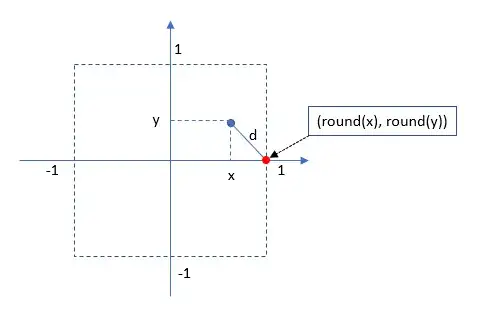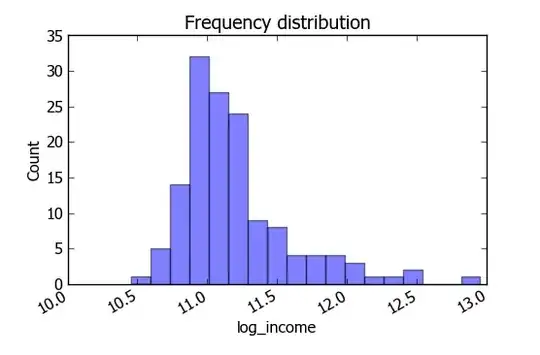I would like to know how to model errors introduced by rounding. For example:
Suppose that
- $n$ pairs $(x, y)$ are such as $x$ and $y$ are drawn from a uniform distribution $[-1, 1 [$ and
- $d$ is given by the Euclidian Distance between $(x, y)$ and respective pair $(round(x), round(y))$.
By histogramming the list of $d$'s results in:
As we can see this distribution is skewed. In my experiments, I checked out the shape of $d$ for 3, 4, 5 variables (see the plots below). I realized that the behavior is always the same:
My questions are:
- Why is this distribution skewed?
- Which distribution should be suitable to model $d$? Is Log-normal the best option?
I understand that Central Limit Theorem is valid for sums of random variables and the Euclidian Distance is not a regular sum. Thus, what should we use to model d?
For clarify, my R script is:
size <- 1000000
x <- runif(size , -1, 1)
y <- runif(size , -1, 1)
z <- runif(size , -1, 1)
w <- runif(size , -1, 1)
t <- runif(size , -1, 1)
x.round <- round(x)
y.round <- round(y)
z.round <- round(z)
w.round <- round(w)
t.round <- round(t)
d.x <- abs(x - x.round)
d.x.y <- sqrt((x - x.round)^2 + (y - y.round)^2)
d.x.y.z <- sqrt((x - x.round)^2 + (y - y.round)^2 + (z - z.round)^2)
d.x.y.z.w <- sqrt((x - x.round)^2 + (y - y.round)^2 + (z - z.round)^2 + (w - w.round)^2)
d.x.y.z.w.t <- sqrt((x - x.round)^2 + (y - y.round)^2 + (z - z.round)^2 + (w - w.round)^2 + (t - t.round)^2)
par(mfrow=c(3,2))
hist(d.x)
hist(d.x.y)
hist(d.x.y.z)
hist(d.x.y.z.w)
hist(d.x.y.z.w.t)


